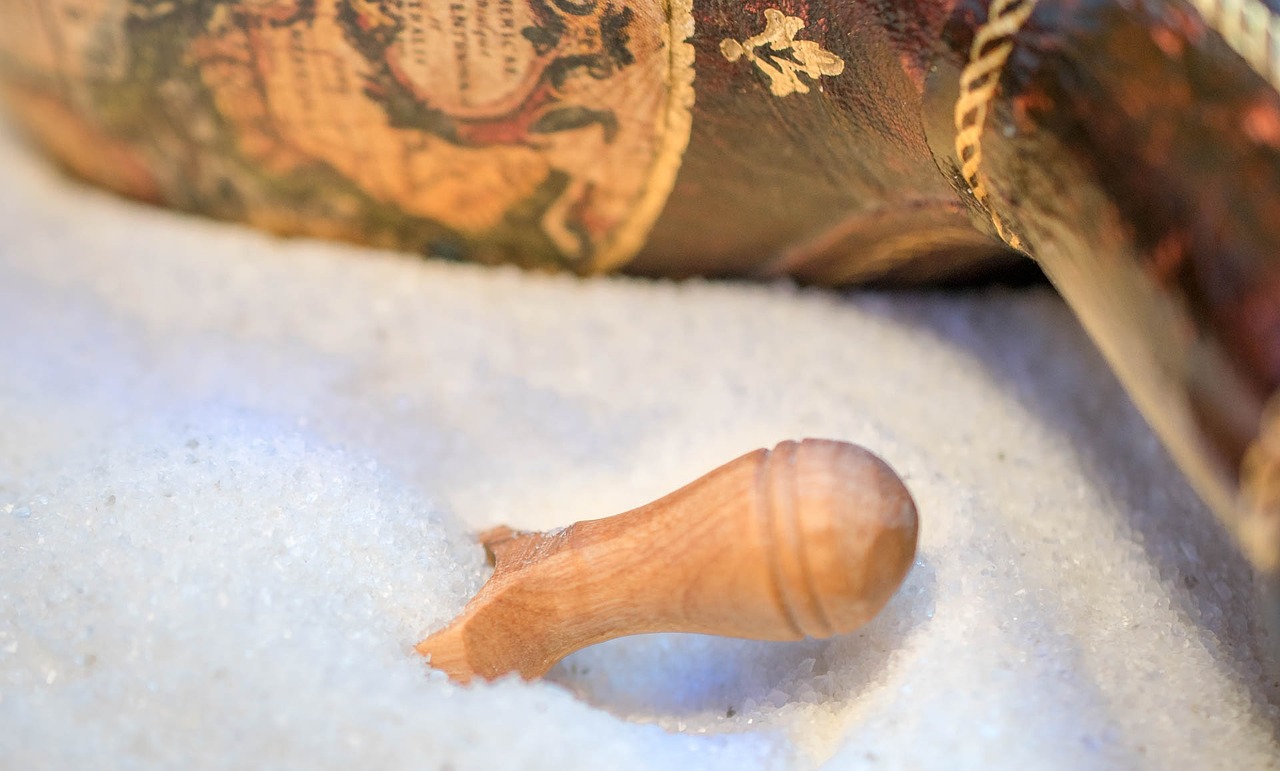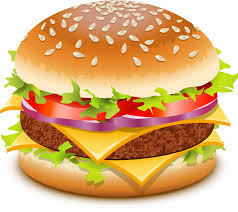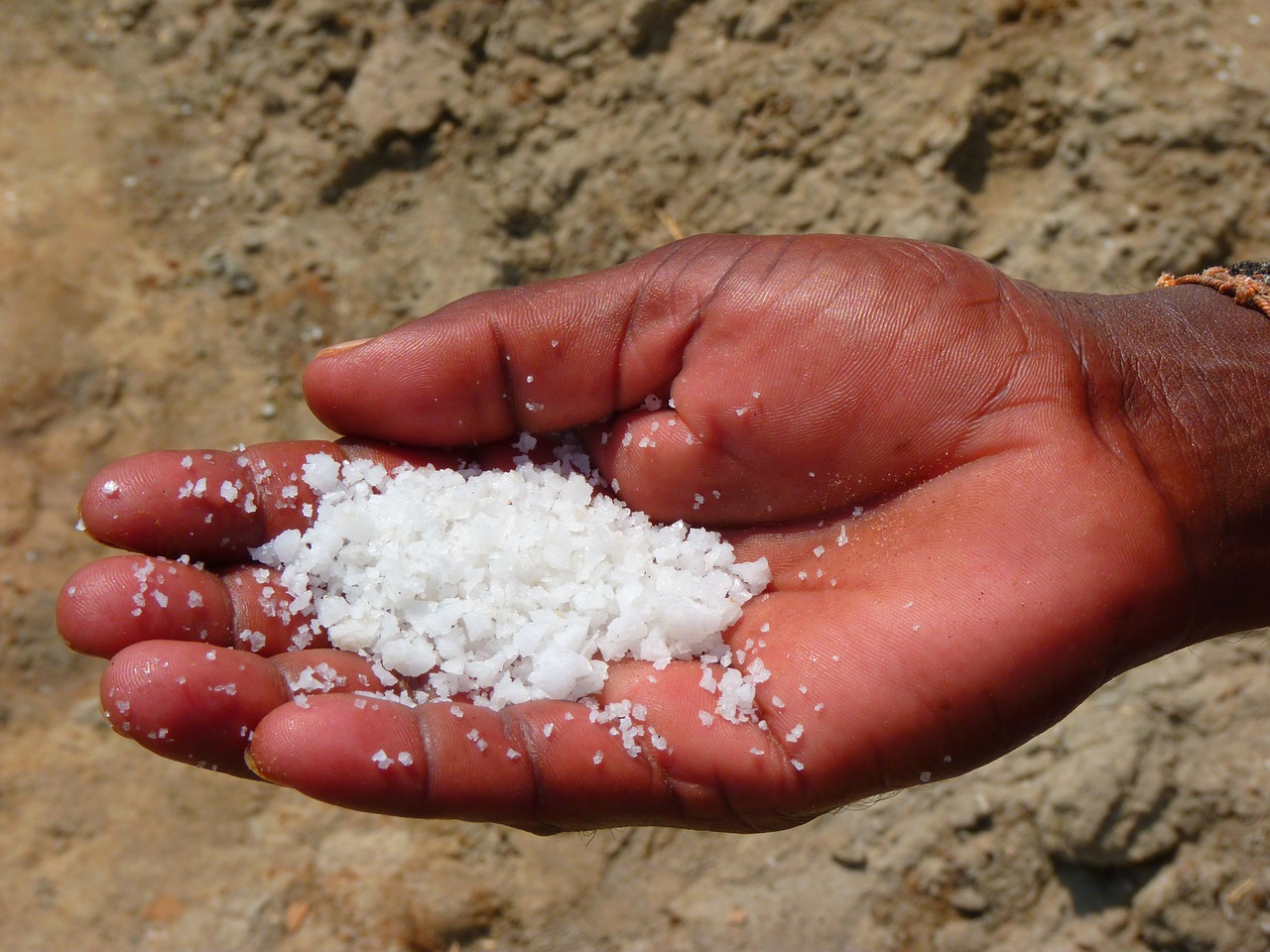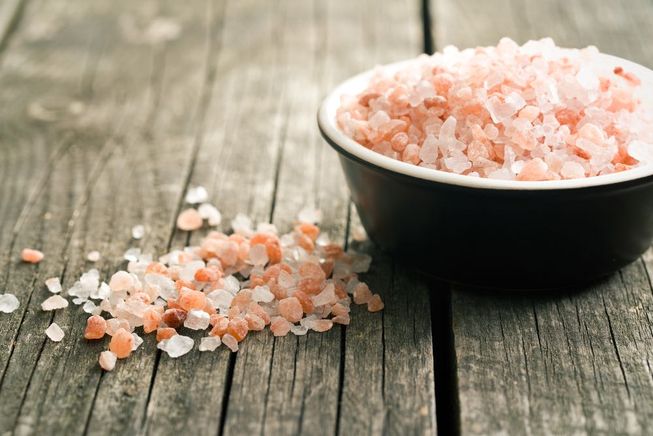I came across an article on Himalayan salt written by Angela Stanton on LinkedIn as I have been curious about the topic for several months now. The questions I was asking myself were, why are humans all over the Western world all of a sudden obsessed with Himalayan salt? If we care so much about locally sourced food, then why are sourcing salt from the Himalayas? Surely, all this mining can’t be good for that location. I’m looking at health food stores in my little corner of the world and am thinking, if this is replicated world wide, it can’t possibly be good or real for that matter.
To top this questioning off, I went to my doctor complaining of tiredness recently and just couldn’t put my finger on why I wasn’t feeling so well and she gave the simplest answer. Are you consuming enough salt?
Salt is a curious subject and over the last few decades, people have been scared into thinking it’s not good for us due to the rise in hypertension. Well, salt is in fact good for us and infinitely important to our diet. As my doctor so lovingly explained (quite likely for the hundredth time…that week), salt is imperative to our diet. Every time we drink water, we quench our thirst, fill our body with much needed hydration and an hour or so later, we pee out the rest. Water goes in, but when it comes out, it is always released from the body with electrolytes. So the more water you consume, the more electrolytes you lose and therefore, if you’re not consuming salt in your diet (or in my case, the right salt), you are dehydrating yourself. And with the lack of electrolytes in my body, I was exhausted.
Before you make assumptions that this could be you, please check with your health professional!
Given our theme is Pink this month, I wanted to find out what was behind the new Himalayan salt movement and here’s where Angela’s extensive research has found on the topic.

Quick: how many of you think that there is a difference between salt and sea salt?
The question is an important one and I want to spend a little time talking about the various salts. I know that many people today buy “sea salt” and a lot of people are now starting to get Himalayan salt, Celtic salt, Mediterranean sun evaporated sea water salt that is still moist and others just eat table salt. Is there a difference? Which is better for you and why?
Salt is made of 2 elements: sodium and chloride, with the chemical formula being NaCl where NA is a positive ion and Cl is a negative one. Together they keep our cells healthy when water is added because they create voltage that helps the cell open its pumps and gates (it mouths if you will) to exchange nutrients and expel toxins.
So in reality, the salt your body needs is just that: sodium and chloride and nothing else.
Let me first answer the question if there is any difference between salt and sea salt: no. All salt on this planet is sea salt. Why the difference in name? It is a fad and some smart companies realized that if they put the word “sea” in front of “salt” people will buy more and they were probably right. People tell me all the time that sea salt is better in general and healthier than salt not realizing that the common table salt is also sea salt. It is. It could be mined from the top of the Himalayan mountains. At one point that cave on the top of that mountain was under the sea and it is sea salt. So let me repeat all salt is sea salt.
So then what is the big fuss about the different colors, textures, naturally evaporated and still most, etc. Well, it is a dirty little secret. Hard to find out what is actually contained in a particular salt when it is not white since by nature pure sea salt is white. So if your salt has any color other than white it has something in it but what? Few salt manufacturers detail what is in their salts.
Let’s take Himalayan salt as an example (I discuss Celtic salt over here). Himalayan salt is a very exotic name. The name alone makes some people associate the salt with the spirit and energy to the magic of the Himalayas. To some it is irresistible for their beliefs. To others it is a better salt because of the minerals. Many firmly believe that the minerals claimed in the pink salt are beneficial and important for their health.
However, there is no such thing as Himalayan salt; the name is already a misleading marketing ploy. If it were called Pakistani salt, which is what it is, would people buy it as much as they do when it is called Himalayan salt? Probably not.
Another reason is the list of 84 minerals.
The Natural Pink Himalayan Rock Salt has an amazing list of trace minerals–and remember “rock” salt is still sea salt that has been out of the sea for long enough to have become rock like from the pressure:
| Element | Symbol | Analysis Type |
| Hydrogen | H | 0.30 g/kg |
| Lithium | Li | 0.40 g/kg |
| Beryllium | Be | <0.01 ppm |
| Boron | B | <0.001 ppm |
| Carbon | C | <0.001 ppm |
| Nitrogen | N | 0.024 ppm |
| Oxygen | O | 1.20 g/kg |
| Flouride | F- | <0.1 g/kg |
| Sodium | Na+ | 382.61 g/kg |
| Magnesium | Mg | 0.16 g/kg |
| Aluminum | Al | 0.661 ppm |
| Silicon | Si | <0.1 g/kg |
| Phosphorus | P | <0.10 ppm |
| Sulfur | S | 12.4 g/kg |
| Chloride | Cl- | 590.93 g/kg |
| Potassium | K+ | 3.5 g/kg |
| Calcium | Ca | 4.05 g/kg |
| Scandium | Sc | <0.0001 ppm |
| Titanium | Ti | <0.001 ppm |
| Vanadium | V | 0.06 ppm |
| Chromium | Cr | 0.05 ppm |
| Manganese | Mn | 0.27 ppm |
| Iron | Fe | 38.9 ppm |
| Cobalt | Co | 0.60 ppm |
| Nickel | Ni | 0.13 ppm |
| Copper | Cu | 0.56 ppm |
| Zinc | Zn | 2.38 ppm |
| Gallium | Ga | <0.001 ppm |
| Germanium | Ge | <0.001 ppm |
| Arsenic | As | <0.01 ppm |
| Selenium | Se | 0.05 ppm |
| Bromine | Br | 2.1 ppm |
| Rubidium | Rb | <0.04 ppm |
| Strontium | Sr | <0.014 g/kg |
| Ytterbium | Y | <0.001 ppm |
| Zirconium | Zr | <0.001 ppm |
| Niobium | Nb | <0.001 ppm |
| Molybdenum | Mo | <0.01 ppm |
| Technetium | Tc | N/A unstable isotope |
| Ruthenium | Ru | <0.001 ppm |
| Rhodium | Rh | <0.001 ppm |
| Palladium | Pd | <0.001 ppm |
| Silver | Ag | 0.031 ppm |
| Cadmium | Cd | <0.01 ppm |
| Indium | In | <0.001 ppm |
| Tin | Sn | <0.01 ppm |
| Antimony | Sb | <0.01 ppm |
| Tellurium | Te | <0.001 ppm |
| Iodine | I | <0.1 g/kg |
| Cesium | Cs | <0.001 ppm |
| Barium | Ba | 1.96 ppm |
| Lanthanum | La | <0.001 ppm |
| Cerium | Ce | <0.001 ppm |
| Praseodymium | Pr | <0.001 ppm |
| Neodymium | Nd | <0.001 ppm |
| Promethium | Pm | N/A unstable isotope |
| Samarium | Sm | <0.001 ppm |
| Europium | Eu | < 3.0 ppm |
| Gadolinium | Gd | <0.001 ppm |
| Terbium | Tb | <0.001 ppm |
| Dysprosium | Dy | <4.0 ppm |
| Holmium | Ho | <0.001 ppm |
| Erbium | Er | <0.001 ppm |
| Thulium | Tm | <0.001 ppm |
| Ytterbium | Yb | <0.001 ppm |
| Lutetium | Lu | <0.001 ppm |
| Hafnium | Hf | <0.001 ppm |
| Tantalum | Ta | 1.1 ppm |
| Wolfram | W | <0.001 ppm |
| Rhenium | Re | <2.5 ppm |
| Osmium | Os | <0.001 ppm |
| Iridium | Ir | <2.0 ppm |
| Platinum | Pt | <0.47 ppm |
| Gold | Au | <1.0 ppm |
| Mercury | Hg | <0.03 ppm |
| Thallium | Ti | <0.06 ppm |
| Lead | Pb | <0.10 ppm |
| Bismuth | Bi | <0.10 ppm |
| Polonium | Po | <0.001 ppm |
| Astatine | At | <0.001 ppm |
| Francium | Fr | <1.0 ppm |
| Radium | Ra | <0.001 ppm |
| Actinium | Ac | <0.001 ppm |
| Thorium | Th | <0.001 ppm |
| Protactinium | Pa | <0.001 ppm |
| Uranium | U | <0.001 ppm |
| Neptunium | Np | <0.001 ppm |
| Plutonium | Pu | <0.001 ppm |
What Minerals Your Body Does NOT Need
I don’t know how familiar you are with some of these elements but let me grab just a few. Of course these are trace, meaning very tiny, so their effects are also minimal. Still over your lifetime, eating salt of this kind many times a day, some of these elements are water soluble but some are not (like lead) and remain in your body.
Plutonium: are you planning to build a nuclear station? Iridium, Radium, Neptunium, Uranium, Protactinium, Thorium, Actinium, Francium, and I could continue are all radio-active elements, some more than others. Ingesting radioactive elements in your body is dangerous. It is particularly dangerous if you are not taking in iodine in the right quantity to help your thyroid clear the radiation out of your body.
What Minerals Your Body Does Need
Iodine is very important in salt (if you are not suffering from Hashimoto’s disease or Grave’s disease, in which case iodine can hurt you). Note that there is a trace level of iodine in pink salt as is in all sea salt because of the fact that on the floor of the sea dead organic matter collects and many sea organic beings, kelp, etc., do have iodine in them. But the amount falling on the floor and remaining there is very tiny.

Your entire body and not just the thyroid needs iodine. The NIH (National Institute of Health) in the US recommends the following iodine levels:
Life Stage Recommended Amount
Birth to 6 months 110 mcg
Infants 7–12 months 130 mcg
Children 1–8 years 90 mcg
Children 9–13 years 120 mcg
Teens 14–18 years 150 mcg
Adults 150 mcg
Pregnant teens and women 220 mcg
Breastfeeding teens and women 290 mcg
Based on the US recommended daily sodium recommendation (after significant calculation and conversion between metrics), the daily amount ingested from Himalayan Pink Rock Salt is less than 5.7 mcg which is a very small fraction of what one needs.
You may recall the earthquake in Japan followed by the tsunami that wiped out the nuclear facility there. The first item sold out in stores after the nuclear explosions was iodine. Iodine can help clean up your system from toxins, even radioactive ones. It can save your life.
There are a few other elements that are important for humans and why salt is consumed: magnesium, potassium, and calcium. However, these are in such small amounts in the pink salt that a fast-food junk cheeseburger (assumed to have no nutrition) provides a magnitude more of these minerals than if the same burger was made with the pink salt with the same amount of sodium in the burger (745 mg):
| element | Amount per kg of pink salt as per claim | Minerals in the pink salt in 745 mg sodium | Minerals in cheeseburger incl. bun (USDA database) with 745 mg sodium |
| magnesium | 160 mg | 0.03 mg | 24 mg |
| calcium | 4050 mg | 0.76 mg | 199 mg |
| potassium | 3500 mg | 0.1 mg | 238 mg |
| sodium | 382610 mg | 745 mg | 745 mg |

As you can see, the minerals for which many prefer the pink salt are in minimal amounts. While we obviously prefer to not eat a fast-food cheeseburger and consider it without much nutrition, it exemplifies that even a junk food considered void of nutrition has more nutrition (prepared with table salt) than if we ate the pink salt. Since there is no nutrition information on table salt used in fast foods, I am not able to provide the nutritional value of the actual same burger with the pink rock salt but I demonstrate the lack of importance of the “minerals” in pink rock salt when from a non-nutritious junk food one can get way more of those minerals.
Most people I talked to believe that the minerals are the most important factor in their choice of the pink salt instead of the purified salt. The minerals you need are lacking and the elements you definitely do not need are present. Purified salt with everything taken out is what you want, with added iodine.

So what did you think? We know this is a sensitive topic for many so we’d love to hear from you. Let us know your thoughts on the matter or any evidence you’ve found about the evasive Pink Himalayan/Pakistani salt below in the comments.
This article is by Angela Stanton PhD author of the Migraine Book featured in the PINK Edition of Healthy Mama Magazine – grab your full copy by subscribing using one of the links below…x
Subscribe Today!
Join 1000’s of mama’s who are creating the best possible health for their families and their little happy souls.


Comments 4
To start I would like to know why Dr. tell us not to eat to much salt? Its just like Drs. tell us not to eat to much sugar. I believe that a little of everything is the way to take care of our body. Some people say they have great benefits of good health by taking the Pink salt in the morning on an empty stomach. I believe that taking a cup of hot lemon with honey in the morning on a empty stomach is just as good.There are so much pros and cons that we just have to know our own body,s to be able to take care of it.
Thank you for this excellent article. It’s a lifesaver. God bless.
I have been searching for an article on this new fad of pink Himalayan rock salt, which everyone seems to be blindly following. This article makes a lot of sense. Thank you.
Would be grateful if you could also excavate logic for olive oil usage, which seems to have taken the world by storm.